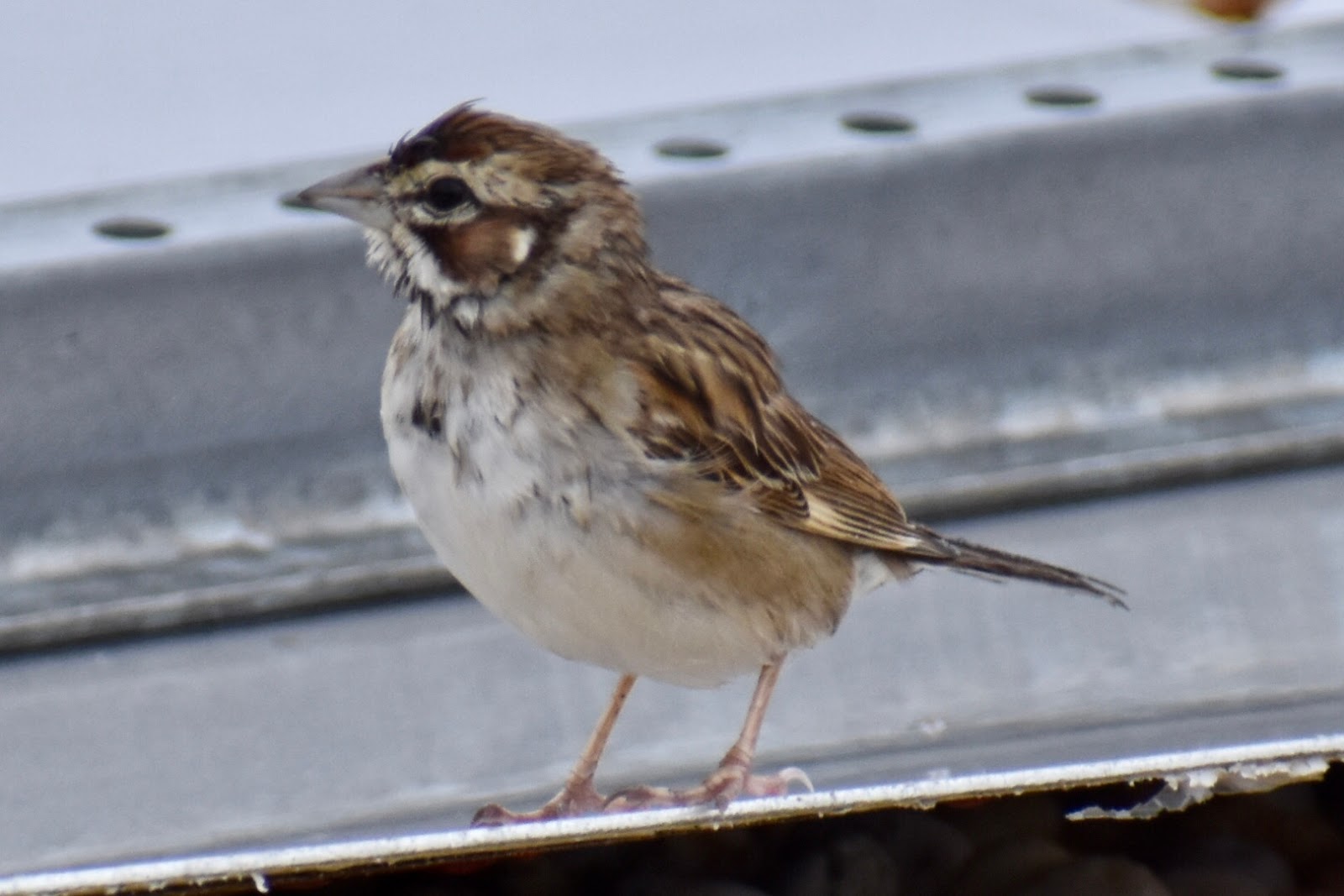For five days since last Saturday, New Jersey had been in the grip of a Nor’easter, battered by persistent 20-plus mile-per-hour northeast winds (stronger near the coast) and rain. Finally, that system pulled away, and winds lightened and swung around out of the northwest Wednesday night, setting up a bird migration flight. It was something to look forward to since, despite my efforts, sea watching in driving rain and strong winds yielded nothing. I wasn’t expecting a banner flight of songbirds, and waterfowl movement is still to come. But there are some second-chance birds (those that I missed on spring migration) to look out for, and a big push of sparrows has yet to occur.
I spent a couple of hours walking the trails and driving the beach at Island Beach State Park and although I logged over 60 species of birds, the activity waned as the day progressed. Sparrows had moved in, but I did not pick up anything new for the year. I saw the pair of Lark Sparrows that have been around for a couple of days, foraging in the grass just before the park entrance. I could not find any of the three dickcissels that my friend had earlier during the morning flight. My surprise finds for the day however were not birds.
Lark Sparrow. © S. Weiss
Lark sparrows are rare in the eastern third of the United States, but a few fall sightings are now expected in parts of New Jersey.
Migrating sparrows like to forage along the grassy roadside and parking lot edges at the park. So, with this in mind, I was slowly driving down the main road looking for birds when I came across a fluttering object on the side of the road. An eastern red bat was struggling to move. I pulled over and got a closer look at the little creature. It appeared to have an injured wing. It would surely get flattened by the next vehicle to pass. Luckily for it, I had a small net and container in my vehicle, and I transported it to the park office. The superintendent took it and said he would see what he could do for it.
Eastern red bat. © S. Weiss
Eastern red bats are one of three species of bats that are part-time residents of New Jersey.
Like birds, most bats migrate at night. Some, like the eastern red bat will migrate during the day. They even use the same migration route as birds. This is the fourth bat species I have come across at the park in the past year. About two weeks ago, I thought I had a winter wren flying around behind my parked vehicle. It actually was a little brown bat and it fluttered away before I could photograph it. Last week, a couple of people on a nature tour showed me a silver-haired bat they found roosting on the trunk of a cedar tree. Last year, at the end of September, someone pointed out a hoary bat roosting from a tree branch at the edge a parking lot. The red, silver-haired and hoary bats are part-time residents of New Jersey and head south for a warmer winter.
Silver-haired bat. © S. Weiss
This bat was observed at the park on September 29, 2022.
Hoary bat. © S. Weiss
This bat was observed at the park on September 29, 2021.
After the park office, I headed south to the nature center. In that parking lot there is some type of rectangular, upright box on top of one of the fence posts. It looks like a roosting box with the hole near the bottom. If that is what it is then the birds, or whatever uses it, can gather and huddle inside near the top where it would be warmer. I have never paid attention to it, but yesterday I saw something gray sticking out of the hole. I dismissed it as storm debris. When I pulled up today, I noticed it again. As I approached to check it out, it moved. I stopped in my tracks so not to spook it more, and photographed it. It turned out to be a gray tree frog. More likely, it is a northern gray tree frog. New Jersey has two gray tree frogs and this one is the more common with a statewide range. The southern gray tree frog, or Cope’s gray tree frog is endangered and found in the more southern part of the state.
Gray tree frog. © S. Weiss











Comments
Post a Comment